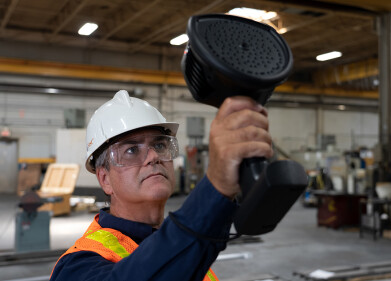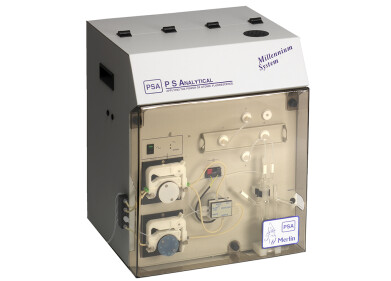Environmental laboratory
Development of New Boron-Doped Synthetic Diamond Electrode for Extreme Electroanalysis Sensing Applications
Apr 29 2013
At Pittcon 2013, Element Six (Luxembourg), world specialists in synthetic diamond supermaterials and member of the De Beers Group of Companies, announced that it has engineered DIAFILM EA (Electroanalysis grade) in collaboration with The University of Warwick.
The free-standing, solid boron doped microwave chemical vapour deposition (CVD) diamond electrode is expected to transform sensing technologies, allowing the development of next generation advanced electroanalysis sensing systems to benefit the biomedical, environmental, food, pharmaceutical, and oil and gas industries.
DIAFILM EA benefits from being chemically inert and stable, overcoming long-term stability issues in the harshest of environments such as in corrosive and elevated temperature and pressure operations. In many of the most demanding of electroanalysis applications, DIAFILM EA has the ability to perform thousands of cycles, whereas other electrode materials only survive a single use. This is combined with high phase purity and optimum levels of conductivity, enabling the highest level of sensitivity, selectivity and responsiveness.
With the introduction of the new DIAFILM EA, Element Six is now actively collaborating with commercial partners to enhanced electrochemical sensing applications leveraging the proven performance of this next generation sensing material. With the widest solvent window of any electrode material, and the lowest background current and capacitance, DIAFILM EA is expected to transform the business economics of electroanalytical sensing systems and technologies.
“For the past decade or so, thin-film boron doped diamond electrodes have not delivered on their technical promise, as the industry has struggled to combine the necessary level of conductivity with the required phase purity,” said Adrian Wilson, head of technologies at Element Six. “We have manufactured a grade of boron doped CVD diamond with the ideal optimal conductivity, combined with 100 percent phase purity to meet this market need. Given its unique properties, DIAFILM EA will advance tomorrow’s sensing systems.”
“The research and development of synthetic diamond as an electrode material has exposed its potential to transform the future of sensing technologies,” said Julie MacPherson, professor, the University of Warwick. “Element Six’s CVD diamond is an exciting material to work with, and one we’ve enjoyed working with throughout our six-year research collaboration with the company.”
The synthetic diamond technical work was completed by the Element Six R&D team based at Ascot in the United Kingdom, and is a result of more than 15 years of research and development. Electrochemical characterisation testing of DIAFILM EA was carried out by the Electrochemistry and Interfaces Group in the Department of Chemistry, at the University of Warwick.
Digital Edition
AET 28.4 Oct/Nov 2024
November 2024
Gas Detection - Go from lagging to leading: why investment in gas detection makes sense Air Monitoring - Swirl and vortex meters will aid green hydrogen production - Beyond the Stack: Emi...
View all digital editions
Events
Jan 20 2025 San Diego, CA, USA
Carrefour des Gestions Locales de L'eau
Jan 22 2025 Rennes, France
Safety, Health & Wellbeing LIVE
Jan 22 2025 Manchester, UK
Jan 25 2025 San Diego, CA, USA
Jan 29 2025 Tokyo, Japan



















